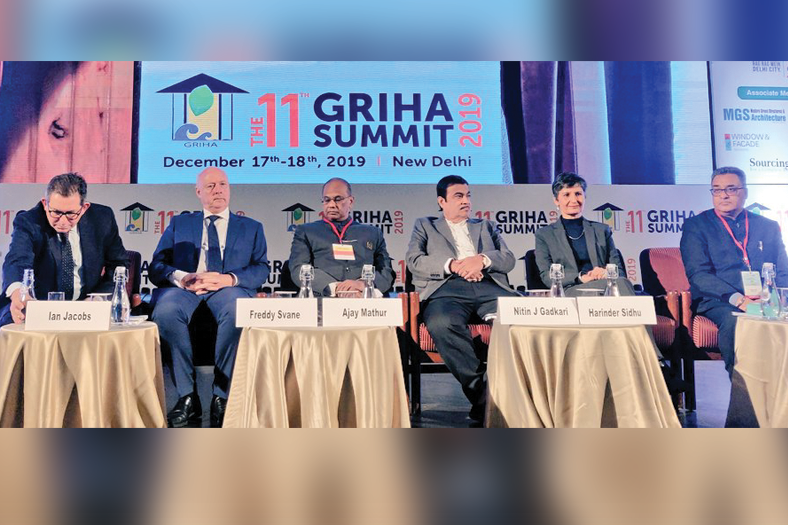
Highlighting that nearly 65 per cent of India’s population is rural, Nitin Gadkari, Union Minister for Road Transport & Highways and MSMEs, said that creating employment for the rural, agriculture and tribal sector is a high priority for the government. This requires knowledge, technology and innovation that can drive sustainable development in India.
The Minister was speaking at the 11th edition of the GRIHA Summit, co-hosted by GRIHA council and UNSW, Sydney, at the India Habitat Centre in New Delhi. The theme for this year’s Summit is “Approach to Integrated Sustainability”.
Speaking about various green initiatives of the government, Gadkari said, “Creating waste into wealth is the new vision for the country. We are working hard to formulate a policy on biofuels in the transport sector. We are also promoting ethanol and bio-compressed natural gas (bio-CNG). The sector is growing very fast. There are plans to make bio-CNG from rice husk in Delhi. We have also launched India’s first motorbike powered on 100 per cent bioethanol.”
Citing the example of Nagpur, the Minister said the city earns nearly `300 crore from recycling sewage water and nearly 80 buses in the city are plying on bio-CNG, made from sludge and various kinds of biowaste. He also spoke about the use of flyash waste being used in construction and the mandatory use of 8% plastic in road construction. In Maharashtra, the Minister spoke about the rejuvenation of rivers and nullahs in a few districts, by deepening the water bodies and using the material for making aggregate used in road construction.
Her Excellency Harinder Sidhu, Australian High Commissioner to India, said India and Australia face similar challenges of urbanisation, which get further complicated by climate change. Talking about the need to make homes and cities liveable and functional, she said, “We commend the GRIHA Council for making frameworks that reduce emissions from our built environment.”
His Excellency Freddy Svane, Ambassador, Royal Danish Embassy to India, emphasised Denmark’s commitment to reduce 70 per cent emissions by 2030, through their own efforts and not by any carbon trading mechanism. Talking about India’s efforts, he added, “The social aspect of sustainability is important. Billions of people in India should be able to enjoy the same quality of life as developed countries, but with more responsibility and with the help of technology and innovation.” He also talked about developing a strategic partnership between India and Denmark.
During the inaugural session, several new projects across India that have demonstrated compliance under the GRIHA rating system received awards. ITC Kohenur in Hyderabad, “Integrity” Campus at Titan Corporate Office in Bengaluru, National Academy of Customs, Indirect Taxes and Narcotics (NACIN) in Hyderabad, Indian Institute of Management (IIM) Kozhikode Campus (Phase V), and Bihar Museum in Patna are among the recipients of a 5-star GRIHA rating. The rating variant GRIHA is designed for new constructions having built-up area more than 2500 square metres. The rating system consists of 31 criteria categorised under various sections such as site planning, construction management, occupant comfort and wellbeing, sustainable building materials, performance monitoring and validation, and innovation.
Cookie Consent
We use cookies to personalize your experience. By continuing to visit this website you agree to our Terms & Conditions, Privacy Policy and Cookie Policy.







